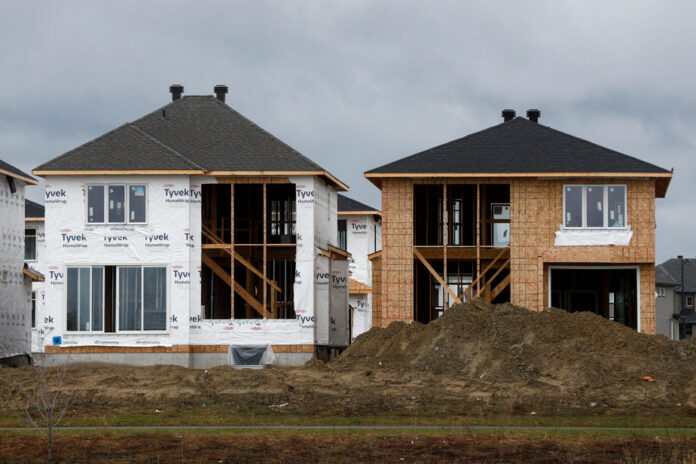The housing shortage in Quebec has worsened in one year, while it has eased slightly in Ontario, according to the most recent update of the study from the Canada Mortgage and Housing Corporation (CMHC) on the country’s housing shortage.
Since last year, CMHC has been carrying out the exercise of estimating the number of additional housing units to be built by 2030 to make housing affordable again in the country.
In Quebec, the expected housing supply gap has increased in the last 12 months. During the 2022 edition, CMHC estimated that 620,000 additional housing units would have to be built to regain the desired level of affordability, that is to say in addition to those already anticipated. The affordability target is the share of after-tax income spent on the purchase of the average home that existed in 2004, before the current upward trend in house prices.
This year, the gap now reaches 860,000 housing units, according to the base scenario.
Production of 860,000 housing units by 2030 corresponds to an additional delivery of 100,000 housing units per year.
Why has the gap widened in Quebec? For three reasons: the growth in the number of households and the increase in their income are fueling demand, while projections of the housing supply have decreased.
It must be said that residential construction in Quebec is experiencing its worst results in more than 20 years this year, with a planned addition of 35,000 housing units.
“The pace of construction is struggling,” said Kevin Hughes, deputy chief economist at CMHC, in an interview. One is construction costs. Then, we must name the labor shortage and also we must add the more difficult financing of projects. We take this into account when we estimate supply gaps. »
If the number of 3.5 million housing units remains the same as last year, the situation has evolved in the provinces, as is the case in Quebec and Ontario.
However, unlike the situation in Quebec, the gap has narrowed in the neighboring province. The number of additional housing units to be built by 2030 has been reduced by 330,000 units, from 1.85 million to 1.48 million. Fewer households are now expected there in 2030 compared to the number estimated last year and household income growth is also lower.
“By revising our economic forecasts,” explains Mr. Hughes, “we saw that Ontario was probably more sensitive to the movement of interest rates than other provinces and that probably last year in Quebec, our forecast was less strong as it should have been. »
In addition, Ontario adopted Bill 23 last year aimed at accelerating the construction of more housing. “We recognize that policies relating to housing supply have begun to change in some provinces, particularly Ontario,” the update reads. We do not yet know what impact they will have on housing supply. »
Quebec has not yet moved in this regard.
“We should ask the different mayors why it took so long. » The Canadian Prime Minister threw the ball into the hands of cities on Wednesday when he was asked to justify the slow deployment of a federal fund dedicated to the rapid construction of housing.
Pressure is strong on the Trudeau government to do more to facilitate access to housing. A month ago, the issue had been targeted as the priority for the Cabinet retreat, but no announcement was made at the end of the meeting.
He wanted to kick off the meeting of the national Liberal caucus with a concrete project: an agreement with the City of London to create 2,000 additional housing units over the next three years.
This agreement is the first to be funded by the Accelerated Housing Fund, launched last March to provide local governments with money to accelerate the construction of 100,000 new housing units across Canada.
Why did it take six months before a first agreement was signed? “We should ask the different mayors why it took so long,” replied Justin Trudeau when the question was asked at a press conference. “We are calling on all mayors in the country to show ambition,” he continued.















